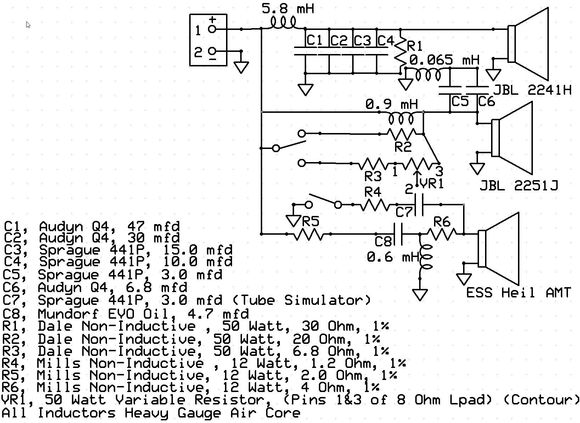Phasing may have to do with it.
What if you made a speaker that was out of phase with itself?
I’ve never heard speakers that image like my Mermans and this is partially what they do.
Signal is fed to the 2251J through a choke as well as by-passing the choke so when blended, you get a composite and the signal that goes through the choke "lags" that of what doesn’t.
"In an inductor, the current lags behind the voltage. Specifically, in a purely inductive circuit, the current lags the voltage by 90 degrees. This means the peak current occurs later in time than the peak voltage."
The contour control determines the amount of by-pass signal that blends with the choked signal. As resistance is added, the signal through the choke predominates causing a rise in the ~1,500-2,500 band (sweetens up the vocals). As resistance is removed, the two signals cancel each other out and the rise is removed leaving a "flat" signal.
This was done because it creates a very steep slope between the 2251J and the Heil. These two drivers do not play nice together without some special treatment to reduce their overlap which can either cause a massive peak or massive suck-out if not handled properly. (BTW, subsequent testing/listening shows R1 works best at about 28 ohms.)


